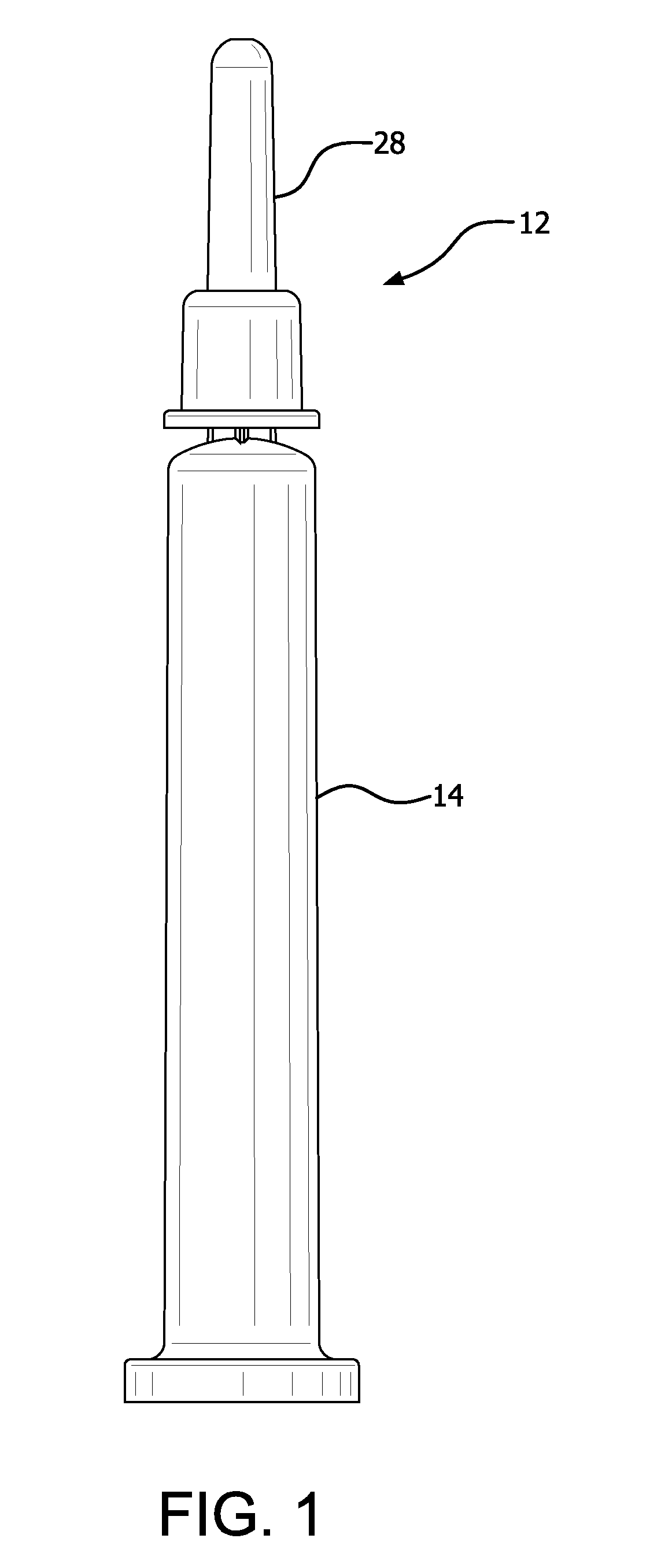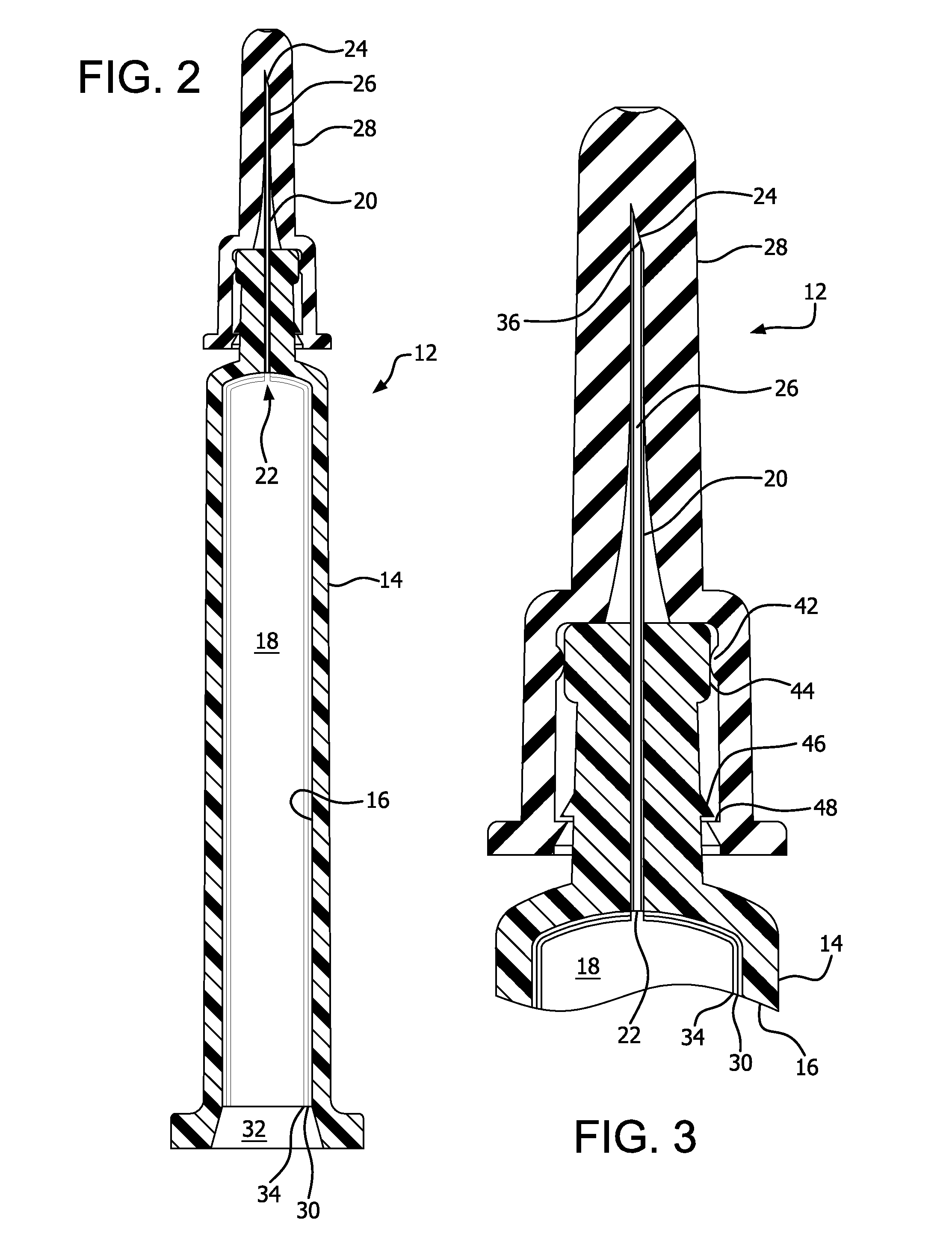PASSIVATION, pH PROTECTIVE OR LUBRICITY COATING FOR PHARMACEUTICAL PACKAGE, COATING PROCESS AND APPARATUS
- Summary
- Abstract
- Description
- Claims
- Application Information
AI Technical Summary
Benefits of technology
Problems solved by technology
Method used
Image
Examples
working examples
[0571]The working examples follow. While much of the testing is carried out using thermoplastic vessels, instead of glass vessels, and protecting barrier coatings, instead of preventing glass delamination, the testing of the passivation layer or pH protective coating is analogous in either type of vessel.
examples a-d
[0572]Syringe samples were produced as follows. A COC 8007 extended barrel syringe was produced according to the Protocol for Forming COC Syringe Barrel. An SiOx coating or layer was applied to some of the syringes according to the Protocol for coating COC Syringe Barrel Interior with SiOx. A lubricity and / or passivation layer or pH protective coating was applied to the SiOx coated syringes according to the Protocol for Coating COC Syringe Barrel Interior with OMCTS Lubricity Coating, modified as follows. The OMCTS was supplied from a vaporizer, due to its low volatility. Argon carrier gas was used. The process conditions were set to the following:[0573]OMCTS-3 sccm[0574]Argon gas-65 sccm[0575]Power-6 watts[0576]Time-10 seconds
[0577]The coater was later determined to have a small leak while producing the L2 samples identified in the Table, which resulted in an estimated oxygen flow of 1.0 sccm. The L3 samples were produced without introducing oxygen.
[0578]Several syringes were then ...
examples e-h
[0581]Syringe samples were produced as follows. A COC 8007 extended barrel syringe was produced according to the Protocol for Forming COC Syringe Barrel. An SiOx passivation layer or pH protective coating was applied to the syringe barrels according to the Protocol for Coating COC Syringe Barrel Interior with SiOx. A lubricity and / or passivation layer or pH protective coating was applied to the SiOx coated syringes according to the Protocol for Coating COC Syringe Barrel Interior with OMCTS, modified as follows. Argon carrier gas and oxygen were used where noted in Table 2. The process conditions were set to the following, or as indicated in Table 2:[0582]OMCTS-3 sccm (when used)[0583]Argon gas-7.8 sccm (when used)[0584]Oxygen 0.38 sccm (when used)[0585]Power-3 watts[0586]Power on time-10 seconds
[0587]Syringes E and F prepared under these conditions, Syringes G prepared under these conditions except without a lubricity layer or a passivation layer or pH protective coating, and Syrin...
PUM
| Property | Measurement | Unit |
|---|---|---|
| Temperature | aaaaa | aaaaa |
| Temperature | aaaaa | aaaaa |
| Fraction | aaaaa | aaaaa |
Abstract
Description
Claims
Application Information
 Login to View More
Login to View More - R&D
- Intellectual Property
- Life Sciences
- Materials
- Tech Scout
- Unparalleled Data Quality
- Higher Quality Content
- 60% Fewer Hallucinations
Browse by: Latest US Patents, China's latest patents, Technical Efficacy Thesaurus, Application Domain, Technology Topic, Popular Technical Reports.
© 2025 PatSnap. All rights reserved.Legal|Privacy policy|Modern Slavery Act Transparency Statement|Sitemap|About US| Contact US: help@patsnap.com



